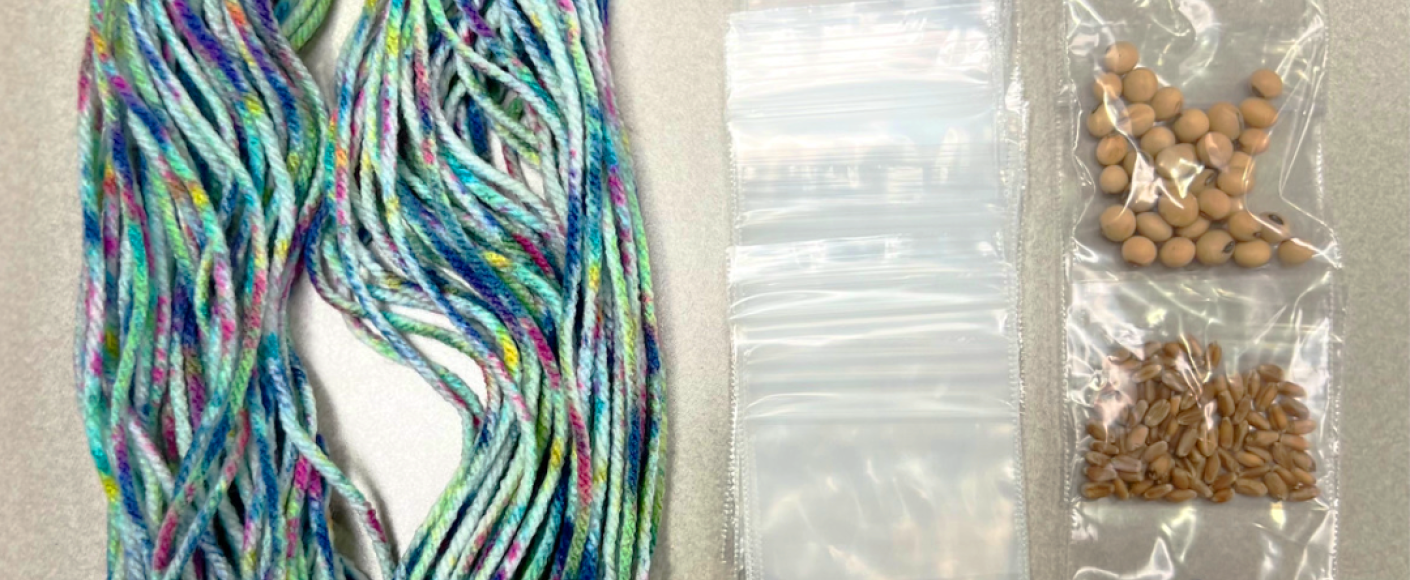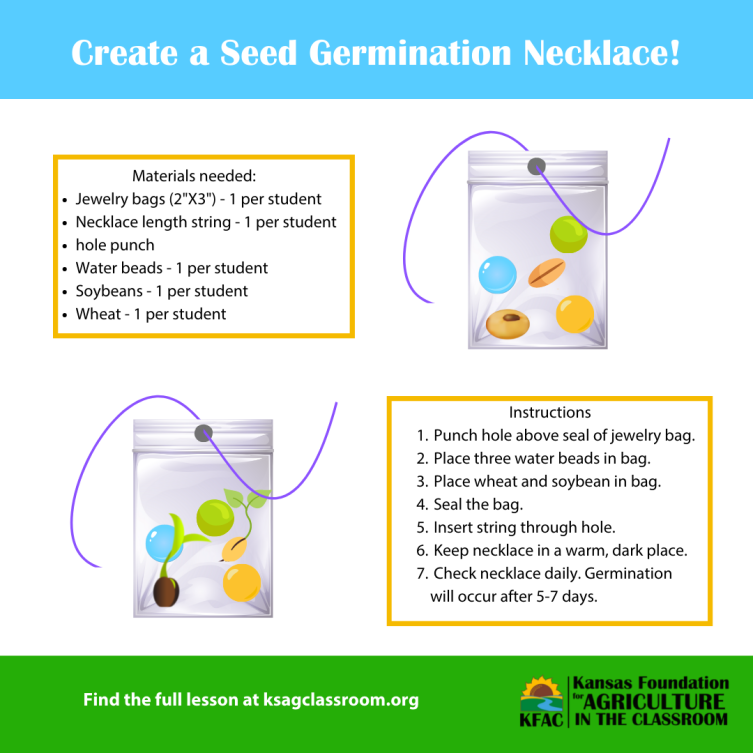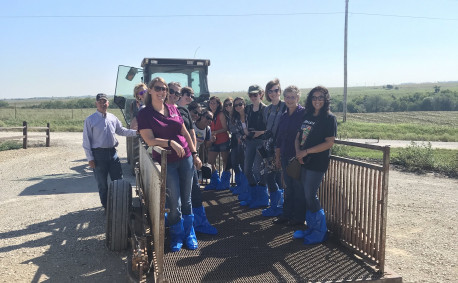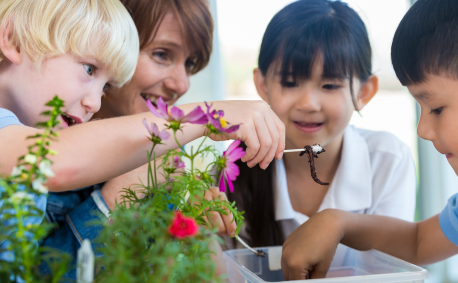How to Make a Seed Germination Necklace
Whether you're an elementary school teacher looking for a fun lesson plan for your students or a parent trying to find educational activities to keep your kids entertained, this seed germination necklace is sure to be a winner!
The hands-on portion of the activity only takes a few minutes, then children can watch as their seeds sprout over the course of a week. Plus, there are lots of learning opportunities along the way to make this an engaging lesson.
Materials You Will Need
- Jewelry-sized resealable plastic bags
- Water beads
- Wheat and soybeans
- Yarn
- Single hole punch
Directions
- Punch a hole in the top of a small plastic bag above the seal.
- Place two to three water beads into the bag. Water is an essential nutrient for plants and an important part of getting the seed to germinate.
- Gently push in a wheat kernel and a soybean seed.
- Seal the bag firmly.
- Insert the yarn through the hole in the top of the bag and tie the ends together to make a necklace.
- Encourage students to wear the necklace under their shirts to keep it in a warm, dark place.
- Have students check their necklaces each day for germination and record the growth. Germination will occur in about five to seven days.
This activity was provided courtesy of Kansas Foundation for Agriculture in the Classroom. Visit their website for the full lesson plan, including free downloads, coloring pages, a tracking sheet and information about related careers. While you're there, check out more of their free lesson plans and resources!
More About
Fun Facts About Wheat
- One 60-pound bushel of wheat provides about 42 pounds of white flour, enough for about 70, one-pound loaves of white bread.
- All the wheat grown in Kansas in a single year would fit in a train stretching from western Kansas to the Atlantic Ocean.
Fun Facts About Soybeans
- Soybeans are 18% oil and 38% protein.
- Soybeans are the second most-produced crop in the U.S.





